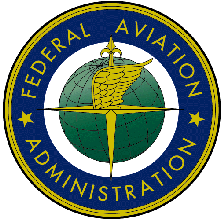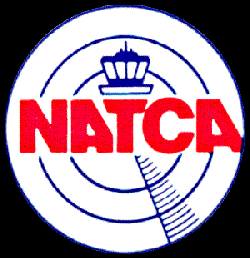FAA Commissions Cornerstone of Air Traffic Modernization
Program
The FAA at Philadelphia International Airport commissioned the
first Standard Terminal Automation Replacement System (STARS) on
Monday. Now fully operational, STARS replaces older-generation
technology with an advanced air traffic system with greater
capability to meet capacity needs for years to come.
 STARS
represents an important milestone in the FAA’s ongoing plans
to modernize the nation’s air traffic control system.
Benefits from the new system include synchronizing data from up to
16 different radars, capturing accurate local weather, and tracking
as many as 1,350 aircraft at a time over a 60-mile radius. By
integrating this data, STARS gives controllers a picture of the
sky
STARS
represents an important milestone in the FAA’s ongoing plans
to modernize the nation’s air traffic control system.
Benefits from the new system include synchronizing data from up to
16 different radars, capturing accurate local weather, and tracking
as many as 1,350 aircraft at a time over a 60-mile radius. By
integrating this data, STARS gives controllers a picture of the
sky
that is as accurate and detailed as technologically possible.
"A significant part of our nation’s future airspace system
has arrived today in Philadelphia," said FAA Administrator Marion
C. Blakey. "STARS and other technology are critical tools to
charting a new century of safer, more efficient flight."
The newly-commissioned system is in the Philadelphia Terminal
Radar Approach Control (TRACON) that controls aircraft within the
60 miles of airspace surrounding airports. Controllers use the
system to separate and sequence aircraft, provide traffic alerts
and weather advisories, and vector arriving and departing traffic.
The airspace for which they are responsible covers an area of
approximately 3,600 square miles in four states and up to an
altitude of 10,000 feet. According to the FAA, the TRACON handled
692,077 operations in 2002.
Other new equipment supporting Philadelphia that make it one of
the country’s most modernized facilities includes: a new
Airport Surveillance Radar Model 11 (ASR-11) that supplies digital
data to STARS; a runway safety alerting system called the Airport
Movement Area Safety System (AMASS); Precision Runway Monitor (PRM)
radar that allows pilots to perform precision approaches; an
automated pre-departure flight clearance system called Tower Data
Link Service (TDLS); and a new TRACON facility featuring innovative
design features for air traffic control.
Under a joint FAA/DoD program, STARS will eventually replace
computers and displays at more than 300 air traffic control
facilities nationwide. In addition to Philadelphia, other FAA
deployments
scheduled for this year include Portland, OR; Boston, MA; Miami,
FL; Milwaukee, WI; Port Columbus, OH; San Antonio; and
Seattle/Tacoma, WA.
 The agency plans to deploy STARS at facilities
deemed most critical over the next several years as funding
permits. Sites with the greatest need – the highest growth in
air traffic combined with older, less-reliable equipment –
will receive STARS the soonest.
The agency plans to deploy STARS at facilities
deemed most critical over the next several years as funding
permits. Sites with the greatest need – the highest growth in
air traffic combined with older, less-reliable equipment –
will receive STARS the soonest.
The STARS FS-2+ system achieved initial operational capability at
Philadelphia on Nov. 17, 2002, and since that time, the system has
been thoroughly evaluated by the FAA, National Air Traffic
Controllers Association (NATCA) and the Professional Airways
Systems Specialists (PASS) resulting in Monday's STARS
commissioning.
"This commissioning at Philadelphia confirms that STARS is the
future of terminal air traffic control for the FAA," said Bob
Eckel, vice president of Raytheon Air Traffic Management Systems.
"We congratulate the FAA on this achievement, and we look forward
to continuing our successful partnership with the FAA, NATCA and
PASS as we proceed down the site deployment waterfall."
NATCA Says, "Yes, But"
Tireless dedication and outstanding effort by Philadelphia air
traffic controllers has resulted in seven months of safe, smooth
operation of the Standard Terminal Automation Replacement System
(STARS) since the equipment was officially turned on.
 "Controllers have always been at the forefront of
the drive for new technology," said National Air Traffic
Controllers Association President John Carr. "In Philadelphia, they
pushed very hard to be the first to receive STARS and worked hard
to make it a success. The only reason STARS is finally succeeding
after a long and difficult history is because controllers have
moved the technology forward every step of the way in the program's
development, testing and implementation process. In Philadelphia,
controllers' contributions were critical to ensuring this equipment
was usable, fit the operational needs of the facility and was a
safe, effective and reliable tool in managing the region's busy
airspace."
"Controllers have always been at the forefront of
the drive for new technology," said National Air Traffic
Controllers Association President John Carr. "In Philadelphia, they
pushed very hard to be the first to receive STARS and worked hard
to make it a success. The only reason STARS is finally succeeding
after a long and difficult history is because controllers have
moved the technology forward every step of the way in the program's
development, testing and implementation process. In Philadelphia,
controllers' contributions were critical to ensuring this equipment
was usable, fit the operational needs of the facility and was a
safe, effective and reliable tool in managing the region's busy
airspace."
'Waterfall' is a 'trickle.'
Even as the FAA celebrates the STARS success in Philadelphia
today, it has said that it plans to deploy only seven new systems
this year around the country, not 18 as originally scheduled, the
union added. As for the FAA's plan to have 188 installed over the
next several years, that number has been slashed to 74. Carr
questioned the FAA's commitment to modernization.
"Clearly, the STARS deployment waterfall has turned into a
trickle," Carr remarked. "This is demoralizing to a lot of the
controller workforce. STARS works and there is no reason why every
terminal facility in the country shouldn't have it. Controllers are
clamoring for it." Carr called the commissioning of the STARS
project in Philadelphia "bittersweet," because "the FAA's
previously well-charted course for modernizing the air traffic
control system has hit choppy waters."
 Classic Aero-TV: In Praise of Alabamas Patriot Aircraft USA
Classic Aero-TV: In Praise of Alabamas Patriot Aircraft USA NTSB Final Report: Cirrus Design Corp SR22
NTSB Final Report: Cirrus Design Corp SR22 ANN's Daily Aero-Term (12.21.25): Dead Reckoning
ANN's Daily Aero-Term (12.21.25): Dead Reckoning ANN's Daily Aero-Linx (12.21.25)
ANN's Daily Aero-Linx (12.21.25) Aero-News: Quote of the Day (12.21.25)
Aero-News: Quote of the Day (12.21.25)





